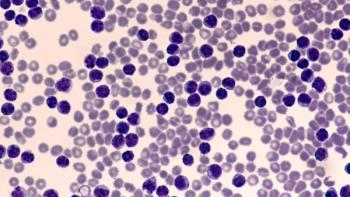
TAR-200 Demonstrates Strong Efficacy and Favorable Tolerability in BCG-Unresponsive NMIBC
At ESMO 2025, Felix Guerrero-Ramos, MD, discussed SunRISe-1 data showing durable responses and low toxicity with TAR-200, the importance of training in device management, and how future biomarker research may refine patient selection and combination strategies.
At the European Society of Medical Oncology (ESMO) Congress 2025, new findings from the SunRISe-1 trial highlighted the efficacy, safety, and biomarker landscape of TAR-200, a novel intravesical drug delivery system for patients with BCG-unresponsive non-muscle-invasive bladder cancer (NMIBC).
In this interview with Pharmacy Times, Felix Guerrero-Ramos, MD, discusses clinical outcomes across carcinoma in situ (CIS) and papillary subgroups, the emerging role of molecular testing in NMIBC management, and how pharmacists can help guide therapy selection and patient care as the treatment paradigm evolves.
Q: Were there any notable differences in efficacy or biomarker correlations between patients with carcinoma in situ (CIS) alone versus those with concomitant papillary disease?
Felix Guerrero-Ramos, MD: Regarding biomarker correlations, the short answer is no—because we still don’t have data for papillary disease only. The current analysis presented at ESMO focused on patients with CIS.
It’s important to note that efficacy is measured differently for CIS versus papillary disease. In CIS, we diagnose the disease through TURBT, but we don’t resect it completely—so we assess complete response rate. That rate was 82.4% at 3 months, which is the highest reported to date.
For papillary disease, the tumor is resected via TURBT, so we instead measure high-grade recurrence–free survival or disease-free survival. In data I presented earlier this year at AUA 2025 in Las Vegas, 81.1% of patients remained free of high-grade disease at 9 months, and we expect to update these data to 12 months soon.
Importantly, as seen in the PENELOPE study, there were no differences in response between Ta and T1 tumors, supporting the idea that TAR-200 achieves good drug penetration across the bladder wall.
Q: From a clinical practice standpoint, how could pharmacists contribute to identifying or monitoring patients who might benefit from TAR-200, particularly as molecular testing becomes more integrated into non–muscle-invasive bladder cancer (NMIBC) management?
Guerrero-Ramos: In the current analysis, we don’t yet have a biomarker that predicts response. However, larger ongoing studies—like the SunRISe-3 trial, which will include over 600 to 700 patients—should provide more accurate predictive tools.
We’ve seen in prior trials with other agents that urinary tumor DNA (utDNA) status—its presence, absence, or clearance—can be a strong predictor of response. Genomic alterations may also help identify which patients are likely to respond to specific therapies or develop resistance. Pharmacists will play an increasingly important role in monitoring molecular testing results and helping manage these evolving treatment strategies.
Q: What safety or tolerability signals emerged in SunRISe-1 that pharmacists should be aware of when counseling patients or managing supportive care?
Guerrero-Ramos: TAR-200 is very well tolerated overall. There are no systemic side effects and very few grade 3 or higher local adverse events. Most events are local, such as lower urinary tract symptoms—urgency, nocturia, or dysuria.
It’s important for physicians to gain experience with device management, because in early use, some patients may discontinue therapy due to unfamiliarity with insertion, removal, or adverse event handling. Training is essential—both hands-on for device management and for managing local symptoms.
We recently published an expert consensus paper in Current Opinion in Urology (open access) outlining best practices for TAR-200 insertion, removal, and adverse event management.
Q: Looking ahead, how might these biomarker findings influence combination strategies or sequencing with other emerging agents such as immune checkpoint inhibitors in BCG-unresponsive NMIBC?
Guerrero-Ramos: As with prostate cancer, we’ll need to learn how to best sequence and combine therapies. But we also need to recognize that our current disease definitions may soon become outdated.
We now have positive trials—such as POTOMAC and CREST—for BCG-naive NMIBC using BCG plus immune checkpoint inhibitors. So in the near future, “BCG-unresponsive” may not be the right term. We may instead categorize patients as treatment-naive or refractory to a specific regimen, similar to first-line or second-line therapy concepts.
This evolving landscape raises regulatory questions—such as whether FDA approvals for BCG-unresponsive disease will apply to patients unresponsive to BCG plus IO therapy. We don’t yet know.
For now, intravesical therapies like TAR-200 remain a very attractive option due to their favorable tolerability and local delivery, reserving systemic agents for later lines. For example, combinations such as CG0070 plus pembrolizumab, studied in the CORE-1 trial, may be appropriate for patients who are refractory to first-line intravesical therapy.
Newsletter
Stay informed on drug updates, treatment guidelines, and pharmacy practice trends—subscribe to Pharmacy Times for weekly clinical insights.




















































































































































































































